I often tell my students, especially my seniors, that they need to make the world a better place. They smile, they nod, they agree. They contemplate ways in which they might do that.
I’m not being flippant when I charge them with this important task. The conversation usually begins with a student’s own exploration of a social issue, a question about justice in an unjust world. A conversation follows in which we look at as many sides as we can, and I let them do most of the work. My older students, cognizant of the world they inhabit, draw some impressive conclusions pretty quickly in a classroom I’ve tried to make as safe a space as possible.
“Go out and fix the world,” I say with a smile, veering them back toward the surface lesson, something rooted in whatever text we’re studying. “Please.” I can only hope they make the genuine attempt to do so, utilizing the vast resources available to them through their education and status in the world, the myriad opportunities unfolding before them like flowers in the springtime sun.
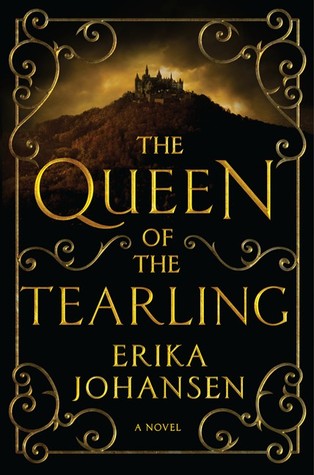
Erika Johansen’s Tearling trilogy addresses the idea of how one fixes a broken world in a setting which appears in the first book, The Queen of the Tearling, to be undeniable fantasy. One might be forgiven for the assumption, early on, that the Tearling is in some version of medieval Europe. Armor-clad and sword-wielding knights on horseback escorting a young heir-apparent to her castle could hardly suggest otherwise. But as the book goes on, it teaches us to expand our assumptions. There is magic in this world. There is an enigmatic history involving a mass migration of people to a foreign land. There might be a chronology we weren’t expecting. Eventual allusions help us to see that the Tearling is a realm set far behind us, the readers, in technology but far ahead of us in time.
The writing is unapologetic, efficient, fearless, instructive. The protagonist, Kelsea, is a young woman whose situation offers no leeway for her impulsive—though noble-hearted—choices. The primary villain, an evil queen worthy of the darkest fairy tales, slices through our expectations the way her ruthless army cuts a swath of destruction across Kelsea’s land. If an aspiring writer wants to know how to create strong female characters who are both equal to their male counterparts and still realistic women, then Johansen’s books should be at the top of the TBR list. Beyond that, the Tearling is just a good story, engaging and gripping in the fiercest ways, filled with political machinations and peril and characters the reader can love.
The second book, The Invasion of the Tearling, drops us right into the action where the first book left off, and as we move through the story, we come to understand that the Tearling is not so much alt-history as it is a cautionary tale. Soon we meet new characters in a completely new setting, starting with Lily Mayhew, an American living in the late 21st century. And now the trilogy, as it alternates mysteriously between Kelsea’s and Lily’s disparate settings, embraces its dystopian nature full-force.
Lily’s social circle reflects the deepest emptiness of socialite life, the predecessor of which can easily be discovered in any elite community today, against the backdrop of an ominously imminent “smart” world. Here, women have again become property and technology imprisons us all. The world of Lily Mayhew is a grim combination of technological superiority and Big Brother, a fantasy world which is bleak because we must know it to be our own world, that we ourselves are just a few unfortunate choices away from bringing this near-future dystopia down on our own heads.
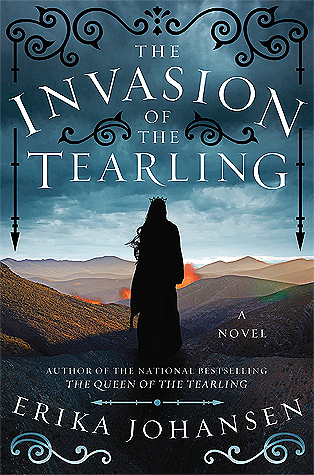 And Lily, along with visionary William Tear and the new community he has amassed, sail through a rift in time and place to what will eventually become the Tearling, a realm that Queen Kelsea, three hundred years later, must manage. The escape from our world to a different one is a powerful fantasy, especially now when society appears, on some days, to be devolving around us amidst the crumbles of social discourse and anesthetizing entertainment options.
And Lily, along with visionary William Tear and the new community he has amassed, sail through a rift in time and place to what will eventually become the Tearling, a realm that Queen Kelsea, three hundred years later, must manage. The escape from our world to a different one is a powerful fantasy, especially now when society appears, on some days, to be devolving around us amidst the crumbles of social discourse and anesthetizing entertainment options.
Tear takes with him all of the things he imagines his utopia will need, which does not include guns or other modern weapons. They are not going with an intention to replicate their modern society with all its flaws. They know they will be starting over in so many ways, and their new society’s population has been cultivated to include the people who can best give it a chance at thriving. They carry with them medicines and doctors, artisans and utopian-minded people, textiles and books.
Books play an important role in the Tearling, and no wonder. It’s no secret that reading fiction from an early age cultivates empathy and emotional intelligence. When Tear’s utopian society experiences divisions, some of those fractures split along the same tribal lines that divide us in our real world. The characters who value books in the Tearling are not the people who, in real life, make an embittered bonfire of their school work every summer and later, as adults, refuse to believe scientific and statistical data on issues such as climate change, gun control, and whether federal money funds abortions.
Johansen’s trilogy is social critique writ large. It cautions readers to examine their own culture, their own religious institutions, their own choices, and to ask whether the concept of utopia truly can transcend human nature. The third book, The Fate of the Tearling, glaringly demonstrates the way a society begins to break down, sliding into catastrophic failure, using as its fissures the seemingly benevolent blessings of faith and devotion. As one character notes, “Few things are more dangerous to an egalitarian ideal than the concept of a chosen people… Our species is capable of altruism, certainly, but it is not a game we play willingly, let alone well.”
The character Row Finn, who inhabits all three books in varying aspects of what a person can be, is a prescient choice for a messiah: someone whose intentions may encompass a greater good, but whose methods and scruples belie a worse sort of humanity, a lack of belief in the viability of equality, a perilous arrogance about the righteousness of his own perfect vision.
Johansen also examines the question of liberty versus security: how much influence the state should have over a free society, and what its role is in protecting a community. It’s not an easy question in real life, and the Tearling story honors its complications in earnest and heartfelt ways.
***
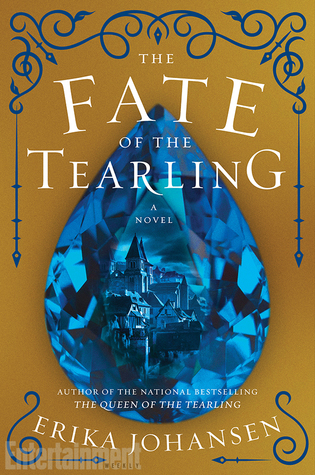 When the U.S. invaded Iraq in 2003, the administration of George W. Bush made a case for war which neglected one crucial component: the budget to pay for it.
When the U.S. invaded Iraq in 2003, the administration of George W. Bush made a case for war which neglected one crucial component: the budget to pay for it.
As the conflict dragged on, seemingly without end, the federal budget every year failed to make appropriate provisions for the war. Perhaps in an effort to make our involvement in Iraq more palatable to the American people, Bush never came out and asked the country to make sacrifices.
The nation made sacrifices, yes, tremendous ones, especially in people and cultural values, but at no point were we asked to cut back on anything. Not on spending, not on the near-pathological celebration of ideology, not on the consumption of our resources. In fact, just the opposite: the American public was urged to spend, spend, spend to help bolster the economy. There were no victory gardens for the Iraq War, only a steadfast belief in the dark Dickensian aphorism that whatever is, is right.
The idea of sacrifice has become taboo in our culture. The idea that a family might want to tighten its metaphorical belt during stressful financial times has become shameful, even though in reality, there is greater dishonor in irresponsibility. The idea that one might have to give something up has grown so unpleasant that we as a culture, obsessed with instant gratification, can barely stomach it. We don’t, as a society, even acknowledge something as basic and undeniable as the physical sacrifices a woman makes to carry and birth a child; every tabloid and magazine cover in the checkout line at the grocery store will assure you these circumstances are a disgrace.
The final book of the Tearling trilogy unflinchingly explores the idea of sacrifice, forcing the characters and the reader to confront the question of what types of sacrifice are meaningful and appropriate, and when they can be righteously made. What, for example, must a queen sacrifice for her realm? What must a citizenry sacrifice for a functioning, civil society? What if that sacrifice includes one’s own assumptions? As one character insists, “These people are so damned proud of their hatred! Hatred is easy, and lazy to boot. It’s love that demands effort, love that exacts a price from us. Love costs; this is its value.”
Johansen offers confident and intense answers to these questions, and while I won’t tell you how the story ends, I will tell you that the conclusion of the Tearling trilogy is—like all the best endings—at once satisfying and shocking, unpredictable and yet inevitable.
***
In the author’s note at the end of the third book, Johansen charges us all with going out to make a better world, which is the central theme of Queen Kelsea’s life’s work. It is the task given to her by her guardian, whose memory haunts Kelsea throughout her reign. It is the underlying quest of all the characters Kelsea meets or becomes in her fugue states, those original settlers of the world which became the Tearling.
And the ways in which they fail or succeed are meant to challenge us, the readers, to make us question our own complicity in creating the world we have perhaps tried to escape through reading.
 About the Author
About the Author
Angélique Jamail’s poetry and essays have appeared in over two dozen anthologies and journals, including Time-Slice (2005), Improbable Worlds (2011), Pluck Magazine (2011), The Milk of Female Kindness—An Anthology of Honest Motherhood (2013), and Untameable City: Poems on the Nature of Houston (2015). Her work was selected as a Finalist for the New Letters Prize in Poetry in 2011. Her magic realism novelette Finis. (2014) has been praised by fiction writer Ari Marmell as having “some of the most real people I’ve encountered via text in a long time,” and by poet Marie Marshall as “a witty tale of conformity, prejudice, and transformation, in a world that is disturbing as much for its familiarity as for its strangeness.” An illustrated edition of Finis., with drawings by Houston-based artist Lauren Taylor, was released in 2015. She teaches Creative Writing and English in Houston. Find her online at her blog Sappho’s Torque.
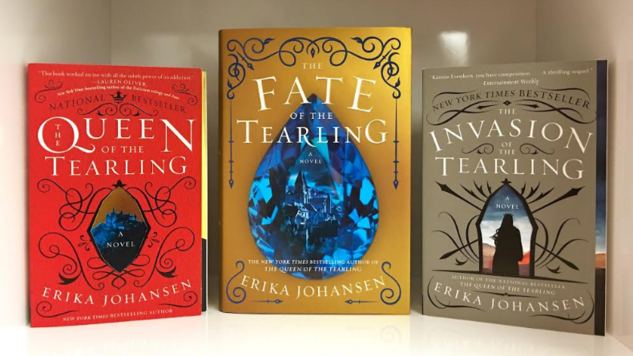
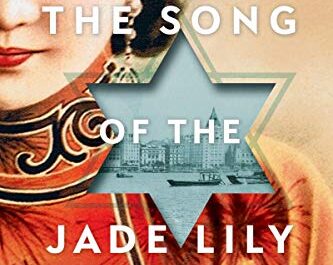

What a literate, challenging, and engaging book review with its elegant and most thoughtful social commentary.. I now want to read both Johansen’s books and more by Ms. Jamail as well!
Thank you. 🙂
I highly recommend Finis. – it’s surprising and engaging and beautifully written. No less than I would expect of an accomplished poet!
Thank you! 🙂
Everyone should have a teacher like Angelique Jamail! Her enthusiasm for fiction is contagious, this review reminding us of all the reasons we love to explore the worlds created by a good author. Big ideas, important themes. These books lead the readers on a journey to the important issues Ms. Jamail would have the next generation tackle.
Thank you! This relevance to some of frightening questions of our own world is one reason these books are at the top of my recommendation list.